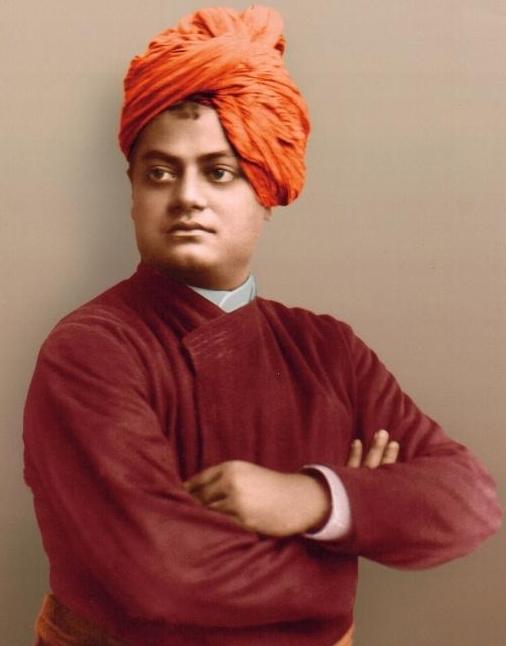
Ramakrishna Paramahamsa was born Gadadhar in the village of Kamarpukur, in what is now the Hooghly district of West Bengal on 18th February 1836. Gadadhar’s parents, Khudiram and Chandramani, were poor and made ends meet with great difficulty. Gadadhar was extremely popular in his village. He was considered handsome and had a natural gift for the fine arts. He, however, disliked going to school, and was not interested in the pursuit of money. He loved nature and spent his time in fields and fruit gardens outside the village with his friends. He was seen visiting monks who stopped at his village. He would serve them and listen with rapt attention to the religious debates they often had.
When arrangements for Gadadhar to be invested with the sacred thread were nearly complete, he declared that he would have his first alms as a Brahmin from a certain low-caste woman of the village. This was a shock in the days when tradition required that the first alms be from a brahmin, but he was adamant.
The family’s financial position worsened every day. Ramkumar, his elder brother ran a Sanskrit school in Calcutta and also served as priest in some families. About this time, a rich woman of Calcutta, Rani Rashmoni, founded a temple at Dakshineswar. She approached Ramkumar to serve as priest at the temple of Kali and Ramkumar agreed. After some persuasion, Gadadhar agreed to decorate the deity. When Ramkumar retired, Gadadhar took his place as priest.
Ramakrishna became a full-time devotee to the goddess spending increasing amounts of time giving offerings and meditating on her. He began to question if he was worshipping a piece of stone or a living Goddess. If he was worshipping a living Goddess, why should she not respond to his worship? At one point he became frustrated, feeling he could not live any longer without seeing Kali. He demanded that the goddess appear to him. He threatened to take his own life with a ritual dagger (normally held in the hand of the Kali statue). At this point,
he is reported to have seen light issuing from the deity in waves. He is said to have been soon overwhelmed by the waves and fell unconscious on the floor. Gadadhar, however, unsatisfied, prayed to Mother Kali for more religious experiences. He especially wanted to know the truths that other religions taught.
Ramakrishna was initiated in Advaita Vedanta by a wandering monk named Totapuri
Ramakrishna married Sarada, who became his first disciple. He attempted to teach her everything he had learned from his various gurus. She mastered every religious secret as quickly as Ramakrishna had. Impressed by her religious potential, he began to treat her as the Universal Mother Herself.
One extraordinary quality of Ramakrishna’s message was its universality of religion.
He developed throat cancer and attained Mahasamadhi at a garden house in Cossipore on 16 August, 1886, leaving behind a devoted band of 16 young disciples headed by Swami Vivekananda
 It is said that when Swami Vivekananda toured the US, his friends and co-disciples of Ramakrishna Paramahamsa were very unhappy with his teachings, as he taught only advaita and he never mentioned his Guru, much to the displeasure of those in India.
It is said that when Swami Vivekananda toured the US, his friends and co-disciples of Ramakrishna Paramahamsa were very unhappy with his teachings, as he taught only advaita and he never mentioned his Guru, much to the displeasure of those in India.